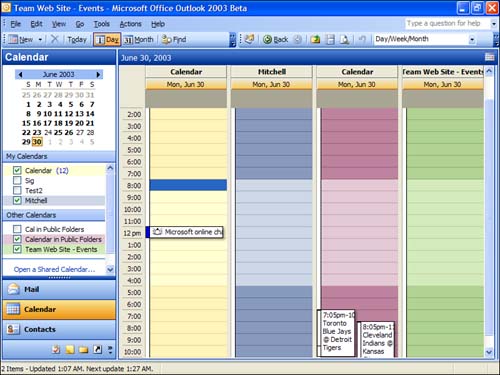

- #HOW TO USE MICROSOFT OFFICE 2003 CALENDAR HOW TO#
- #HOW TO USE MICROSOFT OFFICE 2003 CALENDAR SOFTWARE#
How to manually process a vCalendar file as a text fileĪ vCalendar record is just a text file. On the File tab, select Open & Export, and then select Import/Export.Select the vCalendar file, and then select OK.Select Import an iCalendar (.ics) or vCalendar file (.vcs), and then select Next.On the File tab, select Open, and then select Import.Select the vCalendar file, and then select Open.Select Import an iCalendar or vCalendar file (*.vcs), and then select Next.On the File menu, select Import and Export.To do this: In Outlook 2007 and earlier versions If you receive the vCalendar in the form of a file, perhaps on a disk, you can import it into your default Calendar folder by using the Outlook Import and Export Wizard.

If the vCalendar file arrives as an e-mail attachment, you can double-click the vCalendar, then select Save And Close to add the appointment to your default Calendar folder. With Outlook, you can automatically convert a vCalendar file received from an external source into an Outlook appointment entry. How to automatically process a vCalendar file
#HOW TO USE MICROSOFT OFFICE 2003 CALENDAR SOFTWARE#
You can also use them to schedule appointments with those who use scheduling software incompatible with yours. VCalendar files are used to exchange information about appointments and schedules with others who are not in your work group or organization. The vCard and vCalendar features facilitate PDI electronically. These interchanges frequently include the exchange of information, such as business cards, telephone numbers, addresses, dates and times of appointments, and such. PDI occurs every time individuals communicate, in either a business or personal context. Microsoft Outlook supports vCalendar, a powerful approach to electronic Personal Data Interchange (PDI).


 0 kommentar(er)
0 kommentar(er)
